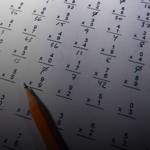Section 1
Preview this deck
Derivative of cot(x)
Front
Active users
0
All-time users
0
Favorites
0
Last updated
4 years ago
Date created
Mar 14, 2020
Cards (65)
Section 1
(50 cards)
Derivative of cot(x)
Derivative of sin(x)
Derivative of f(g(x)) Commonly referred to as the "Chain Rule"
If f is differentiable at x=a, then...
... this limit exists
If f"(x) > 0 on (a, b), then...
... the graph of f is concave upward on (a, b)
The 2nd Derivative Test f'(a) = 0 and f"(a) < 0
... then f has a maximum at x = a
Derivative of sec(x)
Derivative of a Generic Logarithmic function
f has a local (relative) minimum at x = a
f(a) is less than or equal to every other y-value in some interval containing x = a.
dx/dy = 0
The graph of f has a vertical tangent.
If f'(x) < 0 on (a, b), then...
... f is decreasing on (a, b)
At x = a, f is continuous and changes from increasing to decreasing...
... then f has a maximum at x = a.
Point of Inflection
A Point of Inflection indicates a change in concavity. You find these inflections by first finding a candidate when the second derivative is equal to zero. Then check the value of the second derivative to the left and right of each candidate - if there is a change in sign from left to right, then the candidate is a point of inflection.
Critical Points of f
Critical Points occur: > at endpoints of the domain > where the derivative of f does not exist > where the derivative of f equals zero
If f is differentiable at x=a ...
then f is continuous at x=a.
f has a local (relative) maximum at x = a
f(a) is greater than or equal to every other y-value in some interval containing x = a.
Rolle's Theorem
Derivative Product Rule
Derivative of sin⁻¹(u) with respect to x
Mean Value Theorem (by definition)
What identity do you use to find the derivative of cos⁻¹(x)?
The 2nd Derivative Test f'(a) = 0 and f"(a) > 0
... then f has a minimum at x = a
Derivative of cos(x)
Definition of a Derivative f'(x)
Speed
where v(t) is velocity
Definition of a Derivative at a Point f'(a)
At x = a, f is continuous and changes from decreasing to increasing...
... then f has a minimum at x = a.
If f'(x) > 0 on (a, b), then...
... f is increasing on (a, b)
If f"(x) < 0 on (a, b), then...
... the graph of f is concave downward on (a, b)
If f'(x) is decreasing on (a, b)
... the graph of f is concave downward on (a, b)
What identity do you use to find the derivative of csc⁻¹(x)?
Average Rate of Change of f on [a, b]
Derivative of tan⁻¹(u) with respect to x
Derivative of an exponential function
Derivative of sec⁻¹(u) with respect to x
Mean Value Theorem (geometrically)
Derivative of the Natural Log function
f'(a) = 0
The graph of f has a horizontal tangent at x=a.
Instantaneous Rate of Change of f at x=a
f'(a)
Derivative of xⁿ
Velocity
where s(t) is the position
Derivative of csc(x)
If f'(x) is increasing on (a, b)
... the graph of f is concave upward on (a, b)
Derivative Quotient Rule
What identity do you use to find the derivative of cot⁻¹(x)?
Derivative of an Inverse Function
f has a global (absolute) maximum at x = a
f(a) is greater than or equal to every other y-value of f.
f has a global (absolute) minimum at x = a
f(a) is less than or equal to every other y-value of f.
Derivative of tan(x)
Derivative of the natural base function
Section 2
(15 cards)



